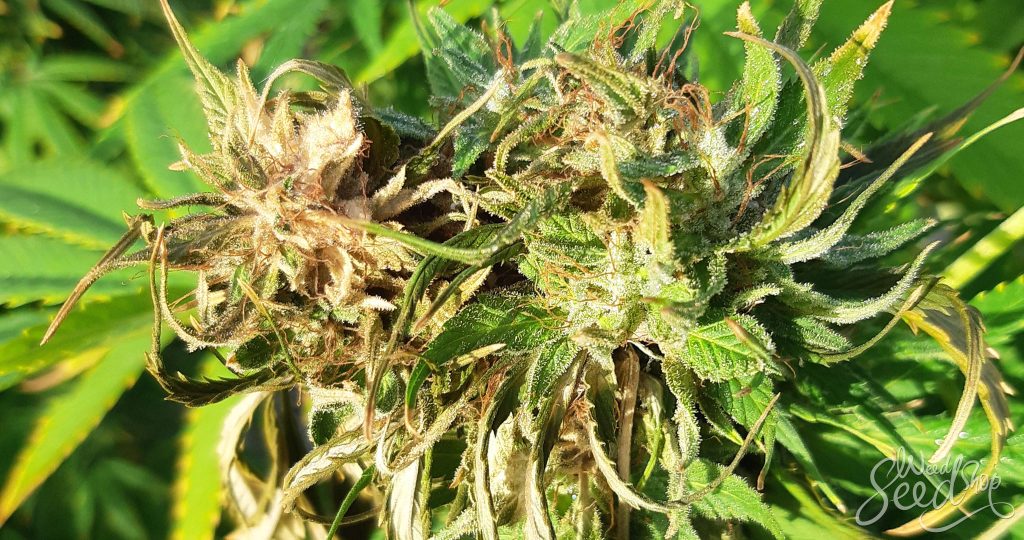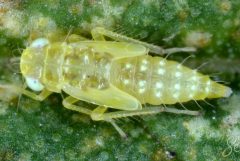Bud rot or Botrytis (Botrytis spp.) is a fungus that cannabis growers worldwide face. This fungus is commonly found during the flowering stage and attacks the flower (or buds) of the cannabis plant. Let’s discuss what Botrytis is, how to identify bud rot, the causes, and how to prevent and treat bud rot.
What is Botrytis aka bud rot?
Botrytis is part of a genus of pathogens responsible for plant diseases that cause billions of Euros yearly in crop losses. It’s a necrotrophic fungus which destroys the plant hosts by feeding on rotting tissue. When talking bud rot in cannabis plants it’s always the Botrytis cinerea fungus which affects the cannabis plant. This type of bud rot is a part of a phenotypically diverse genus of roughly 40 different Botrytis species discovered from the Amazon rainforest to the Arctic tundras.

Bud rot typically starts on the cannabis plant’s stem inside the flowering bud and spreads outward, appearing grey and mushy at the time of infection. As bud rot infection progresses, the signs of disease can be identified by the plant’s leaves appearing wilted, yellow and burnt.
It occurs quite slowly, and is most commonly found in cannabis plants with a dense plant structure that grow large buds. As you can imagine, there’s less air flow in such plants. It also doesn’t help if plants are then placed too close to each other.
The Botrytis fungus tends to be less of an indoor grow room problem due to most indoor growers having more control of the grow room environment in terms of lighting, ventilation, humidity levels and temperature.
Outdoor growers are more susceptible to bud rot because they can not control morning dew or rain. Outdoor cannabis plants have the potential to be saturated daily or nightly. Outdoor grows within coastal regions are often plagued with bud rot due to high humidity.
Experienced growers sometimes recommend a leaf blower to help remove excess water from plants. Growers can go out each morning with their blower or after a heavy dew or rain to remove the excess moisture from the plant. It is important to note that a gas blower can be harmful to cannabis plants because of the fumes. An electric blower is preferred when possible. And care should be taken – don’t try to blow your plants away, just increase some airflow!
Growers can attempt to catch bud rot by looking between the cracks and crevices of the suspected infected buds to determine if the core of the bud is rotting. If the flower is infected, the core of the flower will appear soggy and brown. Don’t worry if your plant is infected, you can still save your plant and grow by bagging the infected plant and removing it to a quarantine area to being treatment and reduce the risk of further infection.
The next step growers can follow once an infected plant has shown signs of bud rot is to sample and investigate all the other plants around the infected plant to determine if the bud rot has spread.
Cannabis plants infected with bud rot can develop “grey” webbing or dusty, white spores. The spores are problematic for growers as they travel by wind, water and pollinators, including the grower and grow room workers. To help reduce the spread of spores, changing into a different set of clothing when moving between grow rooms or having dedicated protective clothing in each grow room is essential.
How to detect bud rot

Bud rot develops in cannabis when the botrytis cinerea fungus infiltrates and infects the plant. The fungus grows inside the plant before symptoms are visible to the human eye.
The best way to prevent bud rot or grey mould on your cannabis plant is to understand the conditions that allow mould to thrive:
- High humidity
- Mild temperatures
- Poor ventilation
- Dense foliage
- Dense buds
- Weak immune systems in plants
Once you understand the conditions that allow bud rot to thrive, it is easier to spot the early signs of bud rot once they begin to show. Infected buds will start darkening, and the plant’s surface will soften, allowing the Botrytis to burst into a grey fuzzy mould.
Bud rot can also affect the plant’s leaves, flowers, stems or root system.
How to prevent and treat bud rot in cannabis
Once bud rot has been detected, and the mould has established itself within the plant’s flower, there is not much that growers can do to reverse the fungus spread. However, growers can prevent the further spread of bud rot. It is vital to remove all infected plants. Doing so may save some of your other cannabis plants. However, many growers will immediately begin to harvest their cannabis flowers.
Moulds are fungi that develop in warm, damp, and humid conditions. They originate from spores, which travel through the air, unseen to the naked eye. Fungus is vital in the ecosystem because it breaks down dead plant matter.
One of the only ways to prevent bud rot is to ensure the growing environment isn’t damp or humid. For indoor crops, growers can choose to invest in dehumidifiers if it’s too humid and, if it’s too hot, an AC unit.
Botrytis prevention begins with the type of cannabis strain selected to grow. Sativas cannabis strains, having adapted to humid equatorial regions, tend to produce light, wispy, airy buds. With improved airflow in the buds, sativas often have superior mould resistance.
Indicas are naturally found in the arid mountain areas of Asia and grow denser buds prone to bud rot when grown in a humid setup or environment.
Consider growing a strain with more airy, mould-resistant buds in setups with high humidity.
Other ways to reduce the chances of mould in your garden include:
- Pruning plants
- Spacing plants properly
- Watering plants appropriately
For plants in the flowering stage, it is essential to avoid using neem oil, sulphur and fungicides because they will change the smell, taste and appearance of the buds.
The best ways to treat your plants when they are in the flowering stage are to follow the following steps:
- Spray your plants with organic fungicides.
- Prune your plants to remove the excess foliage to increase airflow around the flower.
- In addition to spraying your plants with organic fungicides, you can spray your plants with solutions with varying pH levels or compost tea to slow the spread of the disease.
- Note which strains are susceptible to bud rot and grow a different strain next time.
If you are interested in strains that are resilient to bud rot, consider purchasing and growing the following strains:
- Girl Scout Cookies
- Gorilla Haze
- Top 44
- Afghan Kush
- Thai
Pruning and training your cannabis plants can also help prevent bud rot. Pruning plants effectively will increase airflow and reduce moisture collection in the cannabis flower. To reduce the risk of bud rot, you can use trellis or scrog methods to spread out the branches of your plants.
Most importantly, protecting your plants from excessive moisture is vital in the battle against bud rot. Watering your cannabis plants in the morning can help prevent humidity in outdoor garden setups when the sun sets or lights turn off later in the day in indoor setups.
1. Maintain healthy plants
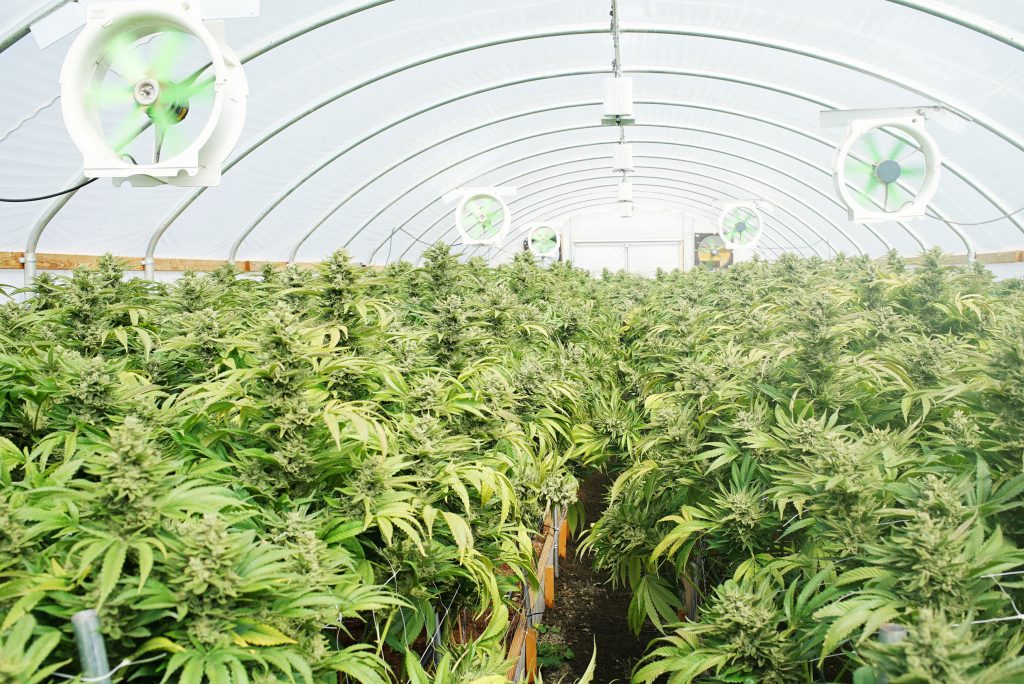
Plants with healthy immune systems tend to fend off bud rot and grow grey mould. Growing organically with a diverse range of nutrients can increase microbes in the soil that are beneficial to the cannabis plant’s immune systems, resulting in a plant that is ready to fight diseases and infections.
Overall, plant health can make a significant difference and help you avoid bud rot altogether. Botrytis often infiltrates plants through wounds. Uninjured plants can help prevent bud rot infections in the first place.
2. Indoor grow room bud rot prevention
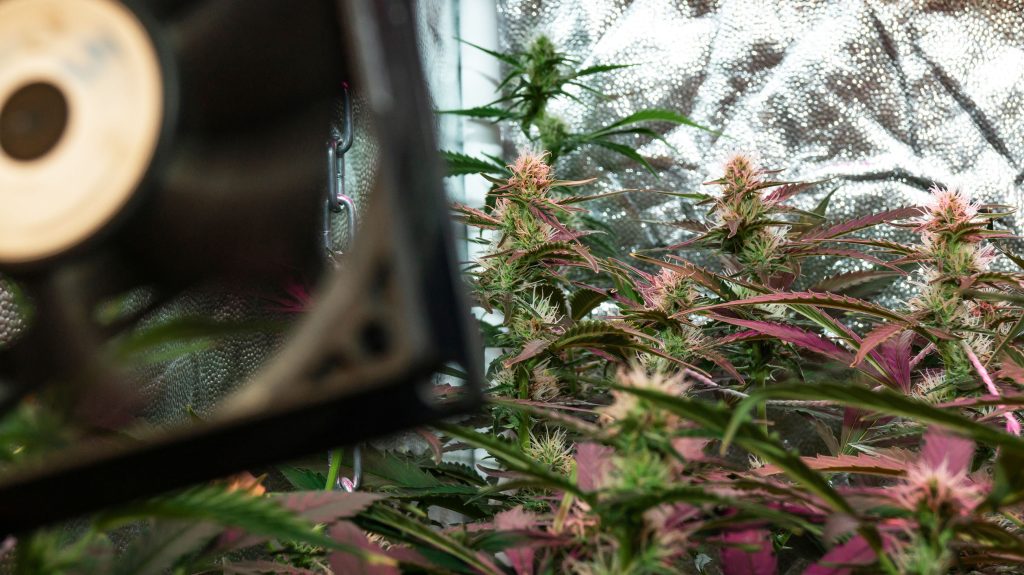
One of the best ways to prevent bud rot is to create a consistent environment within your indoor grow room. Using fans, temperature control systems, dehumidifiers and ventilation to keep humidity down, increase airflow, and maintain steady temperatures. This will create a stable environment and improve the health of your cannabis plants.
Spacing and pruning your cannabis plants will increase help to increase the overall airflow through your plant canopy, which reduces the overall humidity in the room.
Grow room environmental control is the primary method used to avoid bud rot. These four prevention steps will help you reduce bud rot within your grow room:
- Air circulation – Clean air should move continuously throughout the grow room, preventing the spread of harmful spores or diseases. Floor fans can help if you grow your plants on a table setup.
- Humidity control – Dehumidifiers help remove excess moisture from the air, reducing the likelihood of bud rot and white mildew.
- Spacing between plants: Plants shouldn’t touch; air should flow freely between and around all parts of the plant.
- Inspect plants daily: Remove standing water and unnecessary plant material. Thoroughly inspect plants daily to catch diseases in the early stages or to prevent them entirely.
3. Prevent moulds using dehumidification
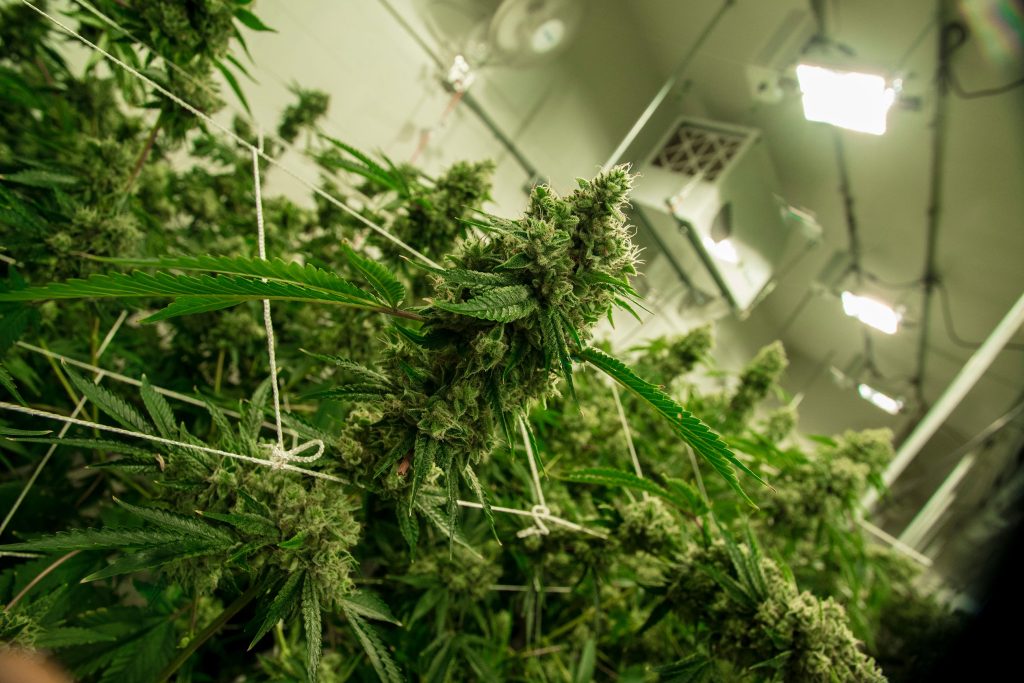
High humidity is the leading cause of bud rot. So, it’s no surprise that dehumidification is the most effective way to prevent bud rot.
Dehumidifiers let growers remove excess moisture from the air within the grow room in a highly energetically efficient way.
Dehumidifiers use a controlled condensation technique to remove water vapour from the air within the grow room, ensuring dry conditions in the greenhouse or grow room, despite constant plant transpiration.
Keeping relative humidity at low levels reduces the risk of dew point condensation, making it almost impossible for bud rot to infect plants. In an environment with no condensation and zero water presence, bud rot will not be present.
4. Improve climate conditions with air circulation

A common problem in cannabis cultivation is the development of microclimates. Microclimates are small, local pockets of humid air. Despite dehumidification, some plants may experience humid conditions, allowing bud rot to develop.
The most effective way to combat humid microclimates is by improving the grow room’s air circulation. Air circulation is a unique airflow method in which the air in the room circulates in 360° motion, creating homogenous conditions throughout the space.
5. Outdoor bud rot prevention

When growing outdoors, growers are limited in ways to protect their cannabis garden from bud rot because they do not have a way to control the climate where they are growing their cannabis. The best way to help prevent bud rot is to make use of appropriate canopy pruning, plant spacing, and feeding the correct nutrients are essential to protecting your crop.
Pruning the bottoms and insides of the cannabis plants is especially important in outdoor grows as it allows air to flow underneath the leaf canopy.
Growing your cannabis in a greenhouse outdoors can help protect against bud rot. After heavy rainfall, it’s crucial to shake each plant to get the water off lightly.
6. Prevent bud rot and mould in the drying room
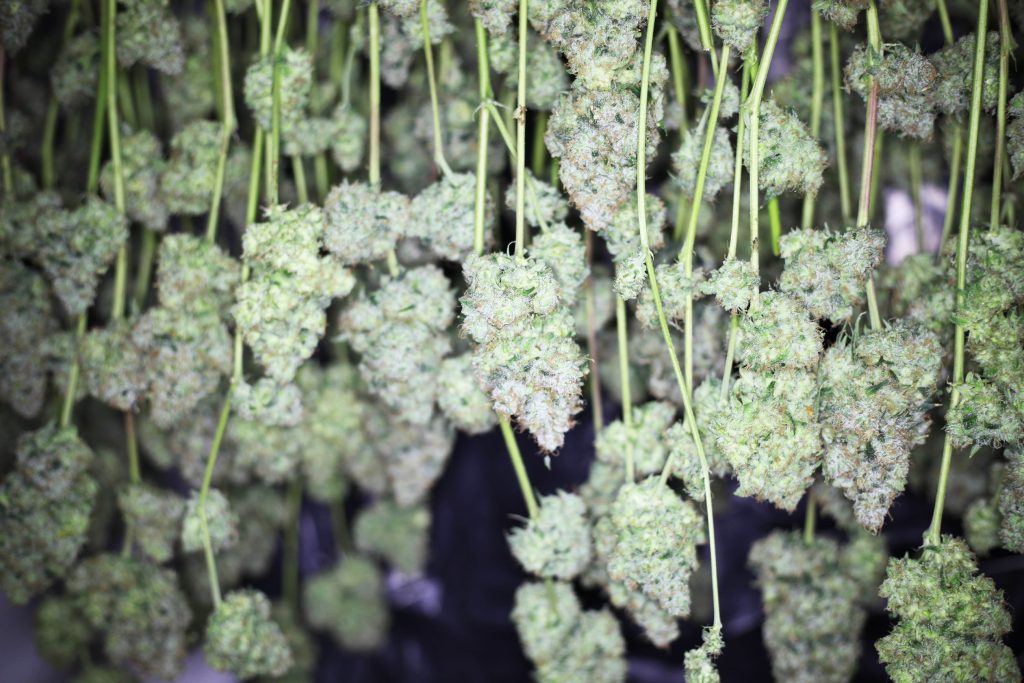
Bud rot can also affect your dry room after the flowers are harvested and dried. Here are a few tips to help prevent bud rot within your dry room.
As you harvest, check the flower colas for rot. If you find any signs of mould, discard or cut out the infected area while saving the rest.
The best time to harvest is after a dry spell. If growing outside, it’s critical to harvest when it hasn’t rained for a few days to ensure your buds have a lower moisture content within their core. Other methods to help reduce Botrytis include:
- Wet trimming – To wet trim your bud by pulling off the fan leaves and trim the cannabis buds before starting the drying process. Wet trimming will help reduce the overall moisture within your drying area and increase airflow around the drying colas.
- Spacing – Leave additional space between hanging branches of buds as they dry.
- Create an optimal drying environment. When drying, create a dark space with a temperature range between 15-21°C (60-70°F) and humidity between 50-65%.
- Adjust your drying speed if necessary. You want to take your time with the drying stage as the chlorophyll is busy breaking down, and the bud’s THCA is still converting.
Common belief states that slow drying will result in a tastier and smoother smoke. However, suppose you’re finding mould in any harvested cannabis buds. In that case, it is vital to speed up the drying time by increasing the ambient temperature and decreasing the room’s humidity to save the rest of your harvest from bud rot.
If you find bud rot while trimming, you and anyone involved must start looking for additional mould.
Like any plant disease, bud rot can be a formidable opponent during your grow, standing between you and a successful grow operation. It’s important to detect it early and to stay on top of it. Hopefully that’ll be much easier after reading our tips!
Have you ever encountered bud rot? How did you combat it? Help a fellow grower out and share your experience in the comments!




